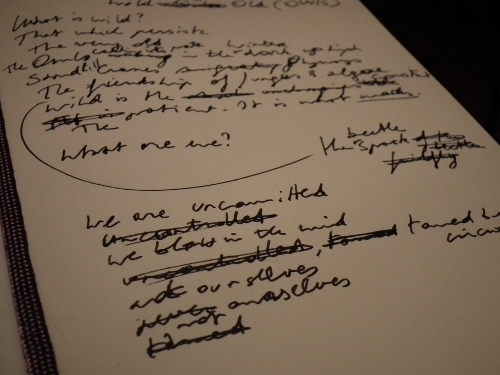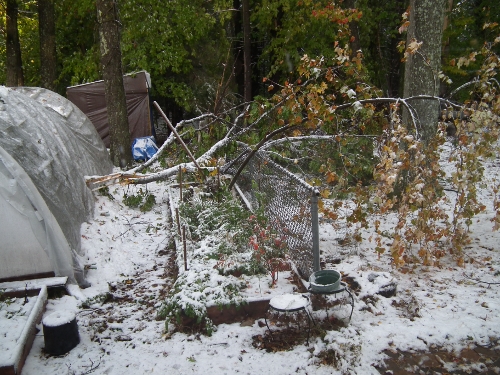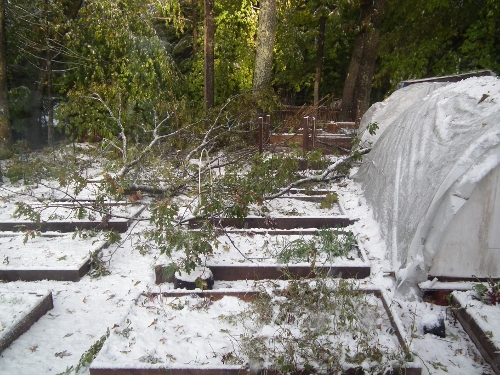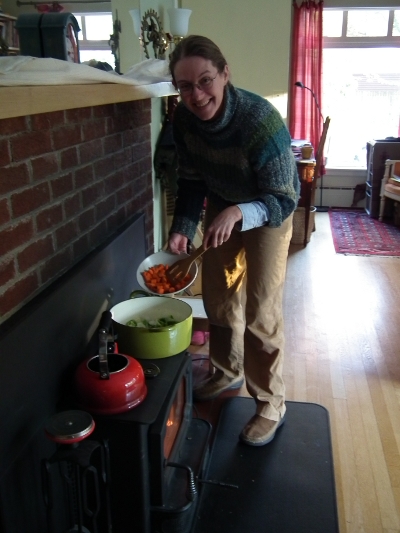I am writing another poem for my 350 poems project. At this rate I’ll be 90 years old by the time we get 350 poems together. That won’t be too bad, really.
Mixed Up Library
Yesterday I finally straightened out my library. I found it to be a strange mixture of Gardening, Herbalism, Ecology, Botany, Beekeeping, Environmentalism, Ethics, Drawing, Interior Design, Transition, Native American history, Latin (!), etc. Also poetry and some novels (Harrison, Bass, Oliver).
At the moment I’m reading Ceremonial Time, Fifteen Thousand Years on One Square Mile by John Hanson Mitchell (my neighbor), several books on my town, Wayland and I’m rereading The Mind on Fire (brilliant biography of Emerson by Richardson) and Harrison’s The Road Home.
More is coming. I splurged a little on myself while shopping for family and ordered American Transcendenalism: A History (Philip Gura), The Shamanic Way of the Bee: Ancient Wisdom and Healing Practices of the Bee Masters by Simon Buxton, Bury My Heart at Wounded Knee: An Indian History of the American West by Dee Brown, Life in the Soil: A Guide for Naturalists and Gardeners by James Nardi and finally, for my Kindle, I’m with the Bears, Short Stories from a Damaged Planet, ed. by Mark Martin. Mix it up, I say!
Across from the bookshelves – barely across – and bathing in the red glow of the morning sun shining through the red silk curtains, sits my massive desk, also freshly reorganized.
I’m going to add a row of pictures above the three drawings, but they need framing first. (Yes, that is still the Maisy sticker that Amie put there years ago.)
Riot for Austerity – Month 37
This is the Riot for the month of November 2011 for the three of us. Our first year’s averages were calculated here, our second year’s averages can be found here. Edson fixed the calculator: all go tither to crunch those numbers!
Gasoline. Â Calculated per person. We drove to NYC and back for Thanksgiving. I walk Amie to school and back again every day, but activism necessitates more (local) drives than usual.
13 gallons per person
31.6% of the US National Average
Electricity. This is reckoned per household, not per person. After two months of not having to pay NSTAR (them paying us, instead) we got a bill again for  69 kWh (all wind). According to our solar meter, we produced 1403 kWh since the system was turned on, 274 kWh in November.  (You can follow our solar harvest live, here).
So in November we consumed:
274 (solar) + 69 (wind) = Â 343 kWh
17.1% of the US National Average
That’s quite amazing, one of our lowest numbers yet! And as you can see, we also made our first megaWatt last month and are well on our way to the next one! Those megaWatts are important because here in Mass. we can sell them as SRECS, which are the main component of the system payback.
Heating Oil and Warm Water. This too is calculated for the entire household, not per person. November has been crazy warm too, just like October. We had a few evenings of wood stove heat, but never needed the oil furnace backup for our “Annex” or for at night. All the oil consumption was for warm water (shower, dishes, laundry).
11.05 8.45 gallons of oil
17.9% 13.7% of the US National Average
{UPDATE} 3 Jan 2012: The way I have been calculating our heating oil consumption is by reading off the furnace how many hours it ran, then multiplying it by .85 because that’s the amount of gallons of oil I *thought* it used. Now DH just told me that our furnace is more efficient than that and the correct number is .65. Hence the correction.
Trash. After recycling and composting this usually comes down to mainly food wrappers.
10 lbs. pp per month
7%Â of the US National Average
Water. This is calculated per person.
376 gallons pp.
12.5%Â of the US National Average
The Dreadful Public Speaking
I was never a confident public speaker. I used to be a TA at the university where I did a lot of teaching, mostly to groups of 20 student, occasionally to an auditorium of 250. I would rehearse those hours meticulously, often to the point of learning the whole thing by heart. It was exhausting, but I did get better at it, more natural, and my students never complained. That was seven years ago.
Now here I am, an activist who needs to speak out publicly. And it turns out that public speaking is not like riding a bicycle. You don’t do it for seven years, you lose the knack.
For the first couple of Transition events I made sure I had strong invited speakers. All I had to do was the introductions. Even though I gladly followed the good advice to keep those short, I was still very nervous. I arrived at the events half an hour early, if not earlier, and over-rehearsed my three lines.
Soon the introductions became more elaborate, then  people started to notice me and wanted to hear from me – a Waylander – and not from an invited speaker who doesn’t live here. After all, that’s what Transition is about.
My speeches became longer. I love writing them, hunting for the words that perfectly describe the ever morphing idea of what Transition is. One day I hope I can distill it all into three sentences again. But for now, they’re half a page, 1 page, 2 pages…
My audience went from 2 (seriously) to 25 to 100. They are great audiences, they listen so intently. And they seem to like my accent and my voice.
But when I’m “up there,” I’m still fighting the flight-or-fight reflex, telling myself:
It’s the words that count, not the one speaking , and all she has to do is speak clearly so she can at least be understood. I am a channel. Â I am merely a channel. These words speak for themselves. You’re doing the Work. It needs to be done. You’ll get better at it. People understand.
Public speaking, it turns out, is like flying. The more I do it, the more I fear it.
Why is that?
Yesterday my Transition colleague Wen (a fabulous public speaker) and I did our “Transition Talk” at the big Interfaith Thanksgiving celebration. You can hear an earlier version of that here, when we did it for the Episcopal Church on Saint Francis day.
Harvested Ginger
I harvested the ginger that I put in in June. I put in 12 ounces and out came exactly 16 ounces! I had to throw out part of the old root (darker brown) because it had gone mushy. The rest of the old root is still firm and spicy. I should have harvested before the frost came, or, better yet, done what I had planned: brought the box inside before the frost, but it slipped my mind. Who knows it would have kept on growing. I must say, though, that harvesting ginger root is as pleasant as harvesting garlic. The smell is divine. This is definitely worth a repeat.
Freaking out: IEA: 5 years or that’s it!
Okay, so now I am freaking out. The IEA  now says that we have five years to change our fossil fuel infrastructure or we’re headed for irreversible climate change, or  the world will “lose for ever” the chance to avoid dangerous climate change.
“The door is closing,†Fatih Birol, chief economist at the International Energy Agency (IEA), told the Guardian. “I am very worried – if we don’t change direction now on how we use energy, we will end up beyond what scientists tell us is the minimum [for safety]. The door will be closed forever.â€
There you have it from a usually very conservative source.
Note also that they want levels to “be held to no more than 450 parts per million (ppm) of carbon dioxide in the atmosphere).” That’s still 100 ppm MORE than what many other scientists and activists (including Bill McKibben) say is safe.
Today is just one of those days…
Salvage
Another “hot” day, in the high 60s. Yesterday we reached 70. Â Talking with people as I go about town it occurs to me that we love it. Of course, who wouldn’t, right? Well… A couple of warm days in November and we’re happy because we can open the windows and leave our jackets at home. We’re so happy only few of us want to consider the cause and the effects of this down the road. Then, when it gets cold again – and probably very cold, in this seesaw climate – we can also be happy because we can finally grab that nagging suspicion by the horns, shake it and say, “global warming, huh!”
Today I wanted to write about salvaging. Yesterday I had to go into an Office Depot to have two big posters printed – we started “deep recycling” at the school I represent for the Green Team. I never go into those places. I can’t bear to look at the $1 packets of 100 pencils or ball points, the $2 t-shirts, the Save On This and That. The disparity between the advertised cost and the real cost of all this junk is too jarring for me.
But anyway, there I was, looking at all this stuff. And I realized why I never go to these places, or rather, why I never have to go. I salvage.
I get all my paper in the mail and through Amie’s school projects. I only write on scrap paper anymore. Â Companies and my town send me envelopes with perfectly good envelopes in them. When we get take-out and the pita bread comes in tin foil, I wipe it and keep it. Same with plastic baggies. I even save the elastic bands that my grocery store puts around egg cartons and bunches of veggies for me. Haven’t had to buy a single elastic band in years now.
There must be many more examples that I can’t think of at the moment. I just do it subconsciously: I see something that is not “used up” and to me it says “reuse!”
I love to read apocalyptic novels and very recently tore through  The Old Man and the Wasteland by Nick Cole (kindle version, 99 cents). Like in The Old Man and the Sea, the old man  leaves his community to find something. Not a big fish, but salvage. They are a community living a hard life in the dessert, decades after the bombs, on salvaged stuff. I loved the insights into the salvaging mind – it’s all about following the story. It’s a great adventure and I was sad to get to the end, not just because it was the end, but because the man finds a whole city (Tuscon), intact, preserved and defended against The Horde.
He calls it salvage, but to me it was the end of salvage. And - tadaa – the epilogue indicates it was the beginning of the new “civilization”. Earlier in the book, the Old Man thought about how depressed everyone was right after the bombs, having lost everything. To survive that you had to accept that you lost everything (and many couldn’t). But now here it is: everything he thought was lost, for him and his community, given back again. What a shock that must be, but there isn’t much about his feelings – it’s too short and racy a novel for that.
Strange, my conflicted feelings about this ending. The curve of humanity swings upward and the Old Man, the author and the readers sing in praise. But this reader closed the book and stepped out into a warm day in November that was supposed to be cold.
Riot of Austerity – Month 36
This is the Riot for the (crazy) month of October 2011 for the 3 of us. Our first year’s averages were calculated here, our second year’s averages can be found here. Edson fixed the calculator!
Gasoline. Â Calculated per person.
17.16 gallons per person
41.8% of the US National Average
Electricity. This is reckoned per household, not per person. Strangely enough, we’ve not received our NSTAR electricity bill! We usually get it on the 26th and that’s how I monitor our usage. Weird development and no one’s answering the phones over there. One thing we know, because we are grid-tied, our solar production for the one and a half (bright and sunny) days that we were without power, was wasted (got diverted into the ground).
We produced 359 kWh with our solar array, but I’ll have to fill in later what we actually consumed.
{Update} Our bill arrived – it was the storm cleanup that had held it up. Like last month’s, it was  again just for “distribution charges”, meaning we produced more electricity than we consumed and so didn’t have to rely on electricity generated by NSTAR (coal or wind). In fact, some of what we produced we did not consume as NSTAR paid for it. Unfortunately, they do not state how many kWh that is – just the credit in dollar amounts. I should deduct that from what we produced. Will investigate.
Heating Oil and Warm Water. This too is calculated for the entire household, not per person. October was warm enough not to have the heat on, and when we did  have it, it was from wood. We’re now simply turning off the furnace and water tank until an hour before we need hot water for a shower. It’s not cold enough yet for us to need the furnace as backup for night time heat.
7.65 5.85 gallons of oil
12.4% 9.5% of the US National Average
{UPDATE} 3 Jan 2012: The way I have been calculating our heating oil consumption is by reading off the furnace how many hours it ran, then multiplying it by .85 because that’s the amount of gallons of oil I *thought* it used. Now DH just told me that our furnace is more efficient than that and the correct number is .65. Hence the correction.
Trash. After recycling and composting this usually comes down to mainly food wrappers.
10 lbs. pp per month
7%Â of the US National Average
Water. This is calculated per person.
431 gallons pp.
14.4%Â of the US National Average
Home Skills: Chimney Works
Looking at the new heating season, DH and I were looking at two tasks.
1. Clean the wood stove chimney. It had been two years, so we felt it was time. Instead of hiring a chimney sweep ($150 a visit) we bought a chimney brush with rods ($165). DH climbed up (our house has only one storey), I fed him the brush and the rods, and the job was done in 15 minutes. Â We’ll add these tools to the Transition Wayland Tool Pool (chimney sweep not included).
2. All of last year, whenever the furnace would come on, the house would fill with an exhaust smell. Not enough to set off our carbon monoxide alarms, but unpleasant. We diagnosed the problem as a crack in the old chimney flue. We asked for an estimate and it came back at $1200 (materials and labor). But when the woodstove was installed and we had the other flue lined, it didn’t look like rocket science. So we bought the metal liner, the connectors and the chimney top online and the high temperature caulk and silicone ($400 total ), and with the help of two friends installed it in an hour or so.
It was pretty warm out today, 50F, so both chimney flues were unused until around 6 pm. I even opened the windows wide. I emptied the rain barrels for storage, reattached the gutters, put the hoses away. I am eager t0 clear the downed limbs from the garden beds so I can plant my garlic. I’ve got 4 pounds of seed garlic and plan to put some in every bed to “sanitize” the soil. I need to fix the hoop house (only one tear from the fallen branch). And I want to get some horse manure from my neighbor and start spreading it all over. Also, I need to get me 5 bales of straw from  the feed mill…
All that will depend on Amie. Her school is canceled a second day because the building still doesn’t have electricity, but she is ill, anyway, and will probably be home tomorrow as well.
Nor’easter > Without Electricity Again
The Nor’easter of October 2011 hit our town pretty badly. Actually, it was just a small snowstorm, not too heavy, not long-lasting. But the trees were not ready for it. It was only the fourth time that there was snow before Halloween in NYC since the civil war! Add to that that the trees now “think” (for good reasons) that it’s summer at the end of October…
So they were still flush with green leaves, which had only just started turning. The snow stuck to them and that’s what weighed them down. This was the view out my living room window the morning after the storm.
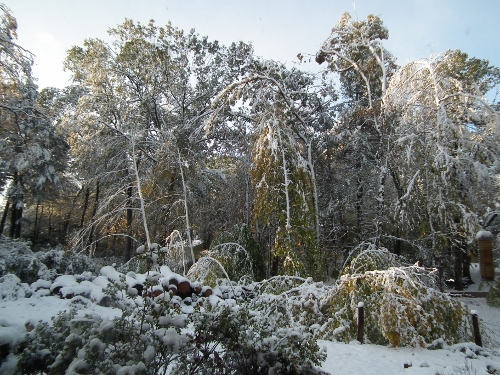
Gorgeous, but dangerous. None of those trunks or branches are usually that diagonal. Several tops snapped off after the picture was taken.
The night before this picture was taken, the night of the storm, I lay awake in bed listening to the creaking and straining of the trees, the tearing of wood fibers, then the crack, then whoosh and finally thump of limbs and branches crashing to the ground. After a couple of hours of this, you just fall asleep from exhaustion, your brain telling you: que sera, sera.
None hit the house, the cars, the roof with the panels. But the hoop house was hit, and two of our fences (metal) are beyond repair. The veg garden is a mess.
There are still a lot of snapped limbs – some the size of small trees – hanging in the canopy, waiting for a good gust of wind to tear them loose. It’s the reason why Halloween is canceled!
Well, to be precise: the town is leaving it up to the discretion of the parents but advises to do an “alternative Halloween”. DH and I know what swords are hanging above our heads, so we’re not letting Amie venture outside.
Another reason for canceling Halloween is that, after over 50 hours, 25% of the town’s population still doesn’t have power back. School was canceled today too, and Amie’s elementary school might still be out of power tomorrow. 56% of people in my town were without power.
We were among them. The evening of the stormwe heard a loud thump and then the power was out. Â Our solar is entirely grid-tied. The grid goes down, all our solar harvest gets diverted into the ground.
But we were prepared with one head lamp each with batteries that are always charged.
We also had our trusted stove – the best investment we ever made – and lots of wood! It provided heat, crucial because the temperature dropped to 25 F the following night. The town opened an emergency shelter in one of the schools.
The stove also allowed hot water for washing dishes and even for a bucket shower with shampoo, and for tea. I also made a wonderful stew on it of garden vegetables and sausage.
Our power was restored after 40 hours. Not too bad, compared to last time (after Irene), which was a little over two months ago. That time we were without electricity for 6 days. So we knew the drill (it was warmer then and I cooked outside on the camping stove).
With the way the economy is going I don’t see all those wires and cables going underground, as they are in most of Europe. So we’re looking into battery backup for our solar.
{UPDATE} When I told Amie we couldn’t go trick or treating she burst into tears, so we went along the safe side of the street, just 10 or so houses. She also opened the door and doled out a lot of candy. So she was happy. Not our usual Halloween, but some of it, anyway. Many people from the North of our town, which is still without electricity, came to our neighborhoods.
